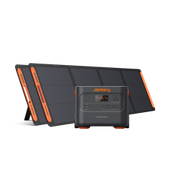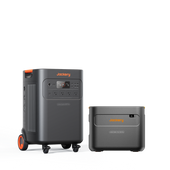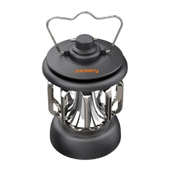Jackery Explorer 1000 Power Station Review: Making Off-Grid Living Easy
This article was originally published on GEAR PATROL.
Power your way through next overlanding adventure (or power outage at home) with this handy power pack.

Power stations imbue flexibility and security into our electricity-driven modern world. Traditional gas-powered generators have done their duty, but the portability and convenience of the rechargeable power station goes unmatched. Additionally, solar panels have become easier and more available to add into the mix and provide a very accessible source of power: the sun. A power station, combined with a solar panel or two and the right weather, can provide seemingly endless power.
Jackery is always a name that comes up when talking about portable power stations. They claim they’re “the number one producer of portable power, and one of the world’s biggest manufacturers of outdoor solar utilities", which is a hefty title to carry in a space that is growing faster than the weeds in my backyard. Its products, including the Explorer line, cater to the needs of the overlanding crowd, vanlifers and family campers with a variety of power options and price points available.
I tested the Jackery Explorer 1000 Portable Power Station in conjunction with the SolarSaga 100 Solar Panels. This set together is sold as the Jackery Solar Generator 1000, but if you already own either of the pieces separately, you can add the other to complete the setup. Here's what I liked (and didn't) about the Jackery Solar Generator 1000 system.
The Jackery Solar Generator 1000: What We Think
Whether you are out on an overlanding trip and need your fridge powered, or working remotely out of your van, I think it is safe to say that you will be pleased with your experience with the Jackery Explorer 1000 Portable Power Station. The SolarSaga 100 Solar Panels do sweeten the deal, and I think they are worth the additional investment. Knowing the battery's capacity is ready to take on what I plug into it provides great peace of mind.
After taking the power station on car camping trips and overlanding excursions over the past year, we have found the unit continues to work well and proves to be super helpful. We have concluded that a slightly smaller unit might be just fine for the weekend warrior if you don’t use many glamping appliances. If you are just planning on charging your smaller electronics and laptops, you can probably get away with the Jackery 500. This is especially true if you can snag some solar panels and have plenty of opportunities to charge up in the sun. And having a slightly smaller version is about 10 pounds lighter as well.
We have definitely found the larger battery to be useful for basic power outages at home. There is nothing better than when the electricity goes out and knowing you can still hook up some of your essential items. If you live in a place where storms tend to knock out your power, the Jackery 1000 can always be charged up and ready to step in when needed. And if there is a situation that lasts a few days, the solar panels work wonders without worrying about acquiring gas for a generator.
Setting up the system is a breeze
After unboxing the Jackery, you are instructed to fully charge the device before using it. Although it’s faster to plug it into the wall, I decided to dive headfirst with the solar panels. Connecting to the panels was super easy, as the proper cords were included and well labeled in the instructions. This first charge test was conducted in my backyard as it provided a controlled environment. The Texas skies were blue and the UV index was at an 11 according to the ol’ reliable Weather Channel app.
My biggest concern initially was the battery overheating. There are obviously ways to set up your solar panels while still keeping the power station out of the sun, but the number on the thermometer gave me some daring ideas when I initially charged up. It was a searing 107º Fahrenheit outside, and the recommended charging temperature on the Jackery is 104º F. It has a fan that kicks on when the unit reaches 131º F, so you most likely won't have an issue as long as it's not sitting in direct sunlight for hours on end. While it is not good for the battery long term (or really any amount of time), I can confirm that there are no immediate malfunctions at the top end of this limit.
The screen is easy to read and the glare from the sun is no match for the LCD illumination. It provides all the valuable information you need, including real-time input and output power numbers, charge level and a variety of other warnings that come in handy.
Disclaimer:
The runtime mentioned for appliances powered by Jackery is for reference only. Actual runtime may vary under different conditions. Please refer to real-world performance for accurate results.








































![[Add - on] Jackery Manual Transfer Switch for Explorer 5000 Plus - Jackery](http://www.jackery.com/cdn/shop/files/add-on-jackery-manual-transfer-switch-for-explorer-5000-plus-9017324.png?v=1754016782&width=170)




















































































Leave a comment